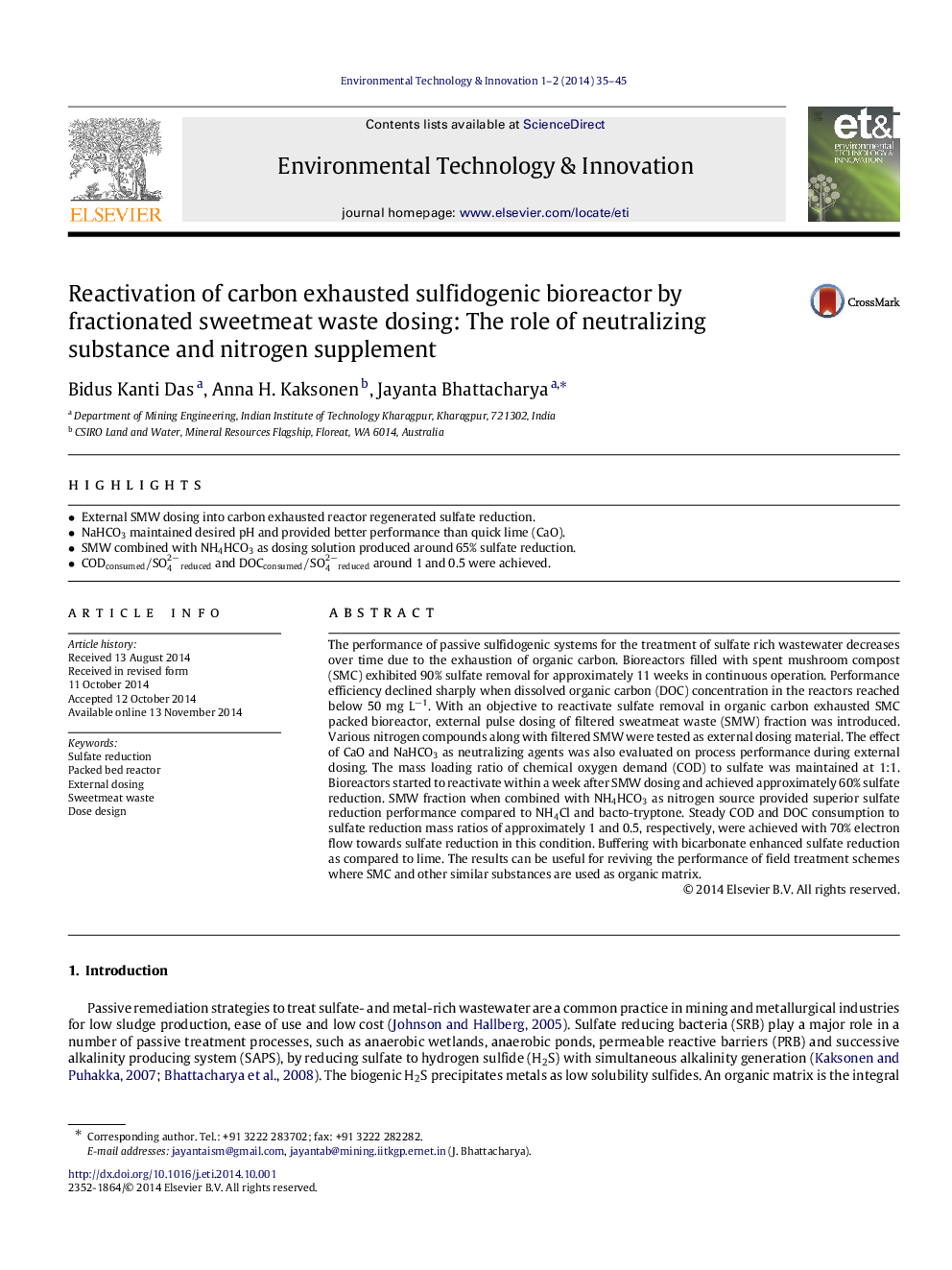| Article ID | Journal | Published Year | Pages | File Type |
|---|---|---|---|---|
| 4428187 | Environmental Technology & Innovation | 2014 | 11 Pages |
•External SMW dosing into carbon exhausted reactor regenerated sulfate reduction.•NaHCO3 maintained desired pH and provided better performance than quick lime (CaO).•SMW combined with NH4HCO3 as dosing solution produced around 65% sulfate reduction.•CODconsumed/SO42−reduced and DOCconsumed/SO42−reduced around 1 and 0.5 were achieved.
The performance of passive sulfidogenic systems for the treatment of sulfate rich wastewater decreases over time due to the exhaustion of organic carbon. Bioreactors filled with spent mushroom compost (SMC) exhibited 90% sulfate removal for approximately 11 weeks in continuous operation. Performance efficiency declined sharply when dissolved organic carbon (DOC) concentration in the reactors reached below 50mgL−1. With an objective to reactivate sulfate removal in organic carbon exhausted SMC packed bioreactor, external pulse dosing of filtered sweatmeat waste (SMW) fraction was introduced. Various nitrogen compounds along with filtered SMW were tested as external dosing material. The effect of CaO and NaHCO3 as neutralizing agents was also evaluated on process performance during external dosing. The mass loading ratio of chemical oxygen demand (COD) to sulfate was maintained at 1:1. Bioreactors started to reactivate within a week after SMW dosing and achieved approximately 60% sulfate reduction. SMW fraction when combined with NH4HCO3 as nitrogen source provided superior sulfate reduction performance compared to NH4Cl and bacto-tryptone. Steady COD and DOC consumption to sulfate reduction mass ratios of approximately 1 and 0.5, respectively, were achieved with 70% electron flow towards sulfate reduction in this condition. Buffering with bicarbonate enhanced sulfate reduction as compared to lime. The results can be useful for reviving the performance of field treatment schemes where SMC and other similar substances are used as organic matrix.
